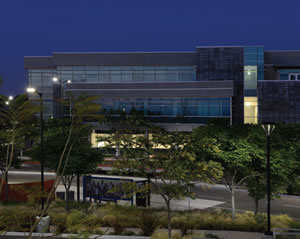Lighting Solution Leads to Big Savings

Choosing Cree for a lighting upgrade saved SDCCD money,
which freed up financial room for other needs and projects.
With the passing of
California’s Clean Energy
Jobs Act (Proposition 39),
Chris Manis, vice chancellor of Facilities
Management for the San Diego Community
College District (SDCCD), saw a golden
opportunity to finance facility upgrades
across his campus system. A state program
providing funding for improving energy
efficiency, Prop 39 makes available up to
$550 million annually to eligible educational
agencies to pay for energy projects
with a strong return on investment.
As the second-largest community college
district in the state, SDCCD continues to
grow rapidly, tripling their footprint in less
than 10 years while at the same time maintaining
their commitment to sustainability.
It quickly became apparent that lighting
projects were the preferred funding recipients.
As Manis explains: “If I save 20 percent
on my electric bill, then those dollars became
available for other projects. We call lighting
the low-hanging fruit because it has one of
the largest savings potentials, especially
when upgrading older facilities that still have
incandescent or older fluorescent fixtures.”
Once funding was secured, SDCCD worked
with several partners to find a lighting solution
that would have the largest ROI while
meeting socially responsible investment
goals. One name rose to the top — Cree.
As far as light quality, Mark Doubleday,
senior planner, Energy Systems & Facilities
Maintenance for SDCCD, states, “With fluorescent,
you are constantly getting pounded
with flicker. Because the Cree lights are so
much more consistent and there’s no flicker,
the lights look brighter so we’ve had to make
adjustments. We’re using daylight sensing
and we’re dimmed below factor y measurements,
so we’re getting additional estimated
25-30 percent savings at minimum as well
as extending fixture life.”
www.cree.com/lighting
This article originally appeared in the issue of .